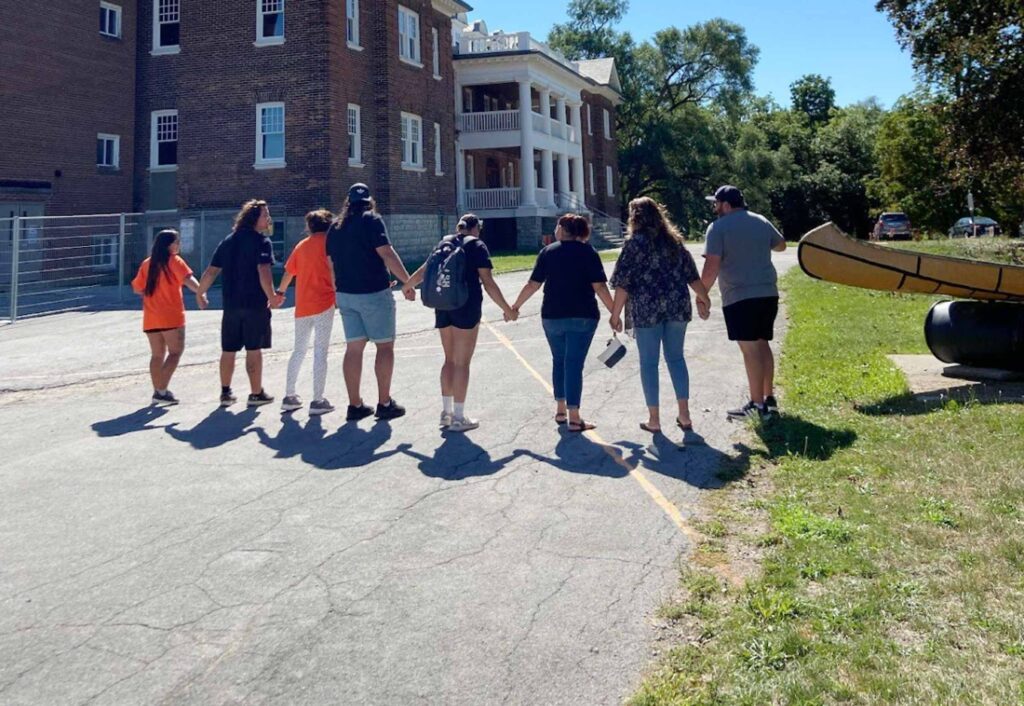For over 136 years, parents of children who attended the Mohawk Institute were robbed of their ability to care for their children. This summer, a group of intergenerational Survivors – youth aged 17-29 – stepped forward to partner with Survivors in the search for unmarked burials and missing children using Ground Penetrating Radar (GPR) technology.
“Survivors’ Secretariat Board of Directors believes the voices, ideas, and contributions of Indigenous youth is vitally important to the work into unmarked burials,” says Roberta Hill, member of the Survivors’ Secretariat Board of Directors.
Background on Youth Program Initiative
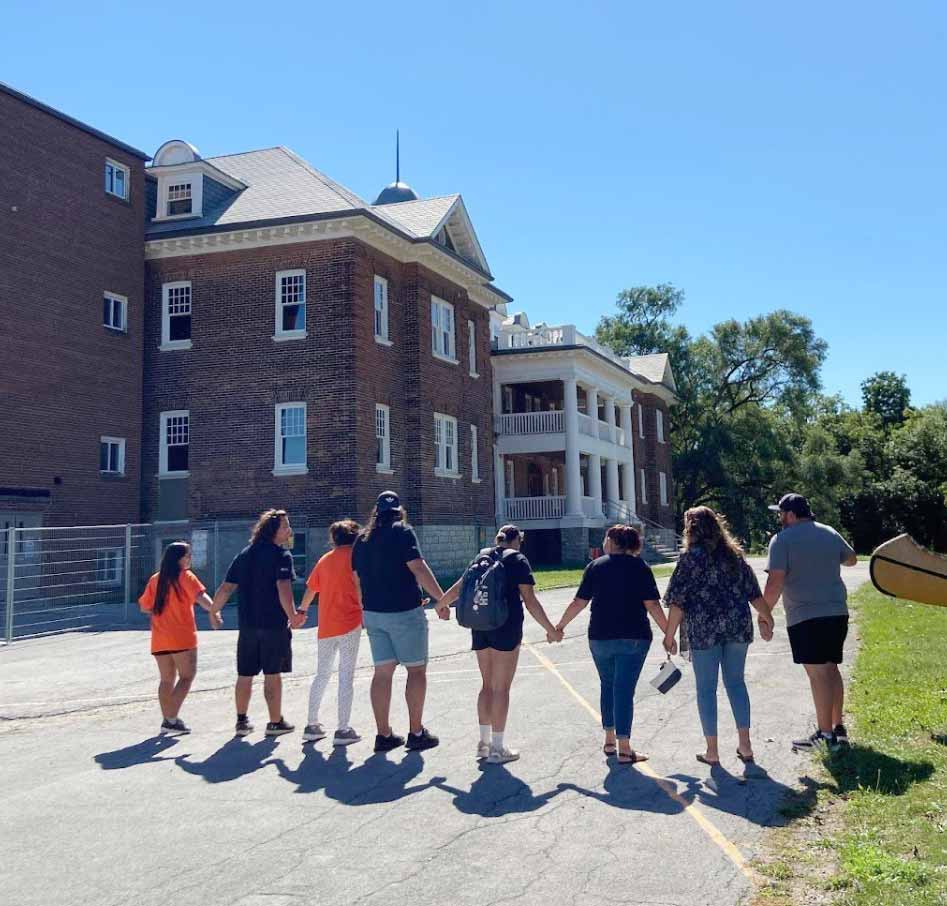
The Reclaiming Our Role – Youth Supporting Survivors program has created a community-focused environment for young people to reclaim their sacred role as helpers.
With financial assistance provided by the National Indian Brotherhood Trust, post-secondary youth were hired from May to September 2022 to collect GPR data on the grounds of the former Mohawk Institute Indian Residential School.
This youth initiative was created in part as the Secretariat sought sources of financing to address funding shortfalls from the federal and provincial governments.
Another reason that the youth program was created is because the work taken on by the Secretariat is community and healing work, and it needs to remain centrally anchored in the pillars of recovery, reclamation and revitalization. For this to happen, we need to ensure that the work of the Secretariat creates opportunities for learning and knowledge sharing between Survivors and the community.
About the Youth Supporting Survivors Program
The 16-week summer employment opportunity was open to post-secondary students. Youth applicants were sought from Six Nations of the Grand River and other Impacted Communities, including the Mississaugas of the Credit First Nation.
“It was important to the Board of Directors that it was Indigenous people and specifically First Nations youth doing the work because of the history and the need for everyone to be part of the healing journey,” says Dawn Hill, member of the Survivors’ Secretariat Board of Directors.
Youth were trained on how to use Ground Penetrating Radar (GPR) technology and were able to aid in the completion of scanning 387 10 x 10 metre grids which represents 1.5% of the 607.5 acre total search area.
PLEASE NOTE: The data collected has not yet been analyzed for burials. The Secretariat is currently working to determine the best path forward to analyze the data and how best to proceed in collecting further GPR data.
In addition to this training, youth participants:
- Attended cultural gatherings, including a 2-day Wampum gathering.
- Completed First Aid and CPR training.
- Participated in sessions with the Secretariats’ Human Rights and Cultural Monitors.
- Met with the police forensic team who assisted in the work of laying new grids for the GPR team.
Meet the 2022 Youth Supporting Survivors Summer GPR Team
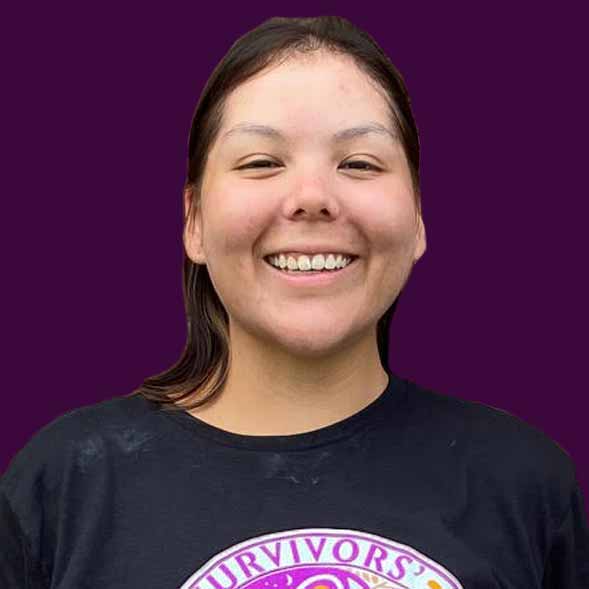
Angelina Bomberry
Angelina Bomberry is a 4th-year McMaster University student who is working towards obtaining a combined Honours B.A. degree in Anthropology and Indigenous Studies

Dakota Sabourin
Dakota Sabourin is a 2nd-year Ogwehweh Language Student at Six Nations Polytech University working towards obtaining an Honours Bachelor Degree in Kanien’kéha.

Riley Hill
Riley Hill recently graduated from Western University with a B.A. in Biological Anthropology and Archaeology. In September, she will begin her 2nd year of study at Six Nations Polytechnic in the Kanien’kéha Language program.
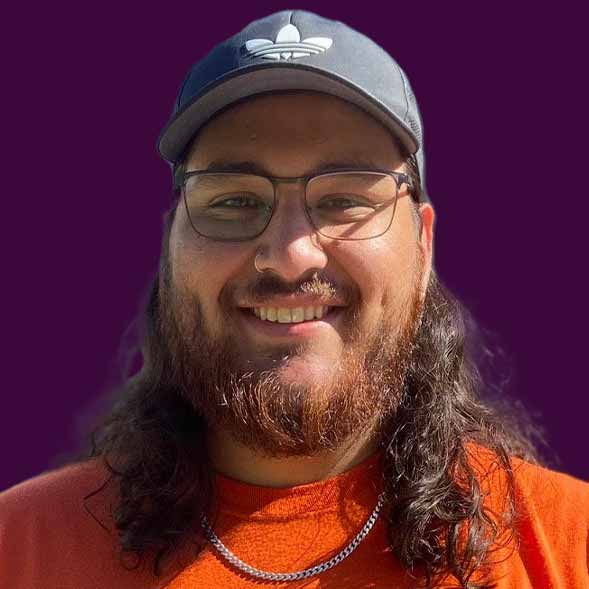
Eric Patterson
Eric Patterson is a 4th-year Queen’s University Sociology Student with a minor in Film.
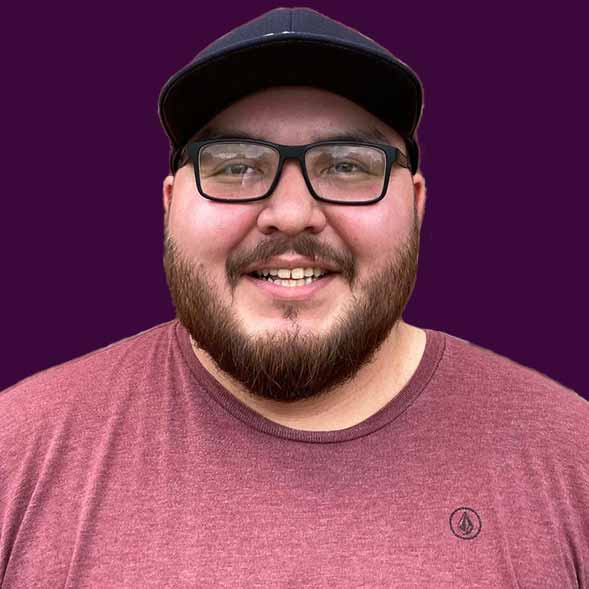
Treyton Squire
Treyton Squire is a 2nd-year Child & Youth Care student at Mohawk College.

Jesse Squire
Jesse Squire is a 3rd-year Environmental Science student at Lakehead University.
The Elements of the Summer Program
Forming Connection
Survivors and the Secretariat team emphasize the importance of holding community conversations between youth program members and Survivors.
“The Secretariat encourages communities to engage young people into finding answers and the important work of healing. We have to break down barriers; it’s easier to be brave when we create a space where others can add their voices, energy and lived experiences. Together, we can come together to assist the Survivors mobilize change,” says Sherelene Bomberry, member of the Survivors’ Secretariat Board of Directors.
Camaraderie
Secretariat staff and Survivors understand that it’s also important to have a sense of fellowship amongst one another. Monthly potlucks and drop-in visits by Survivors helped to build relationships and open dialogues.
“When Indigenous youth go off to university, it can be a huge culture shock, especially if they have lived on the reserve your whole life. It was great to connect with other Indigenous youth who are also pursuing higher education,” says Jesse Squire, Reclaiming Our Role – Youth Supporting Survivors program participant. “All the other students care about the search for missing children just as much as me and we can relate to one another.”
Experience, Skills, and Confidence
Students not only learned how to conduct GPR data collection, they also gained a sense of confidence as they shared their perspective, insight and learning through media relations, writing, designing, and public speaking.
“I felt very inclined to put my name forward to become a part of the work we’ve been doing,” said Jesse Squire, Reclaiming Our Role – Youth Supporting Survivors program participant, as part of a Toronto City News TV interview. “My great-grandfather attended the residential school, so it’s been very important for me and my family to find out the truth of what happened, and where the children went.”
Legacy
Young people want to continue the conversation when they get back to school, bringing the knowledge they have gained into their post-secondary spaces and sharing it with the other Indigenous students.
“It justifies what the survivors have been saying, that there are people and kids who passed away at these schools and they don’t know where they are,” Dakota Sabourin, Reclaiming Our Role – Youth Supporting Survivors program participant, explained as part of an interview with Toronto City News. “I got really sensitive over the summer, because it’s really hard [emotionally]. You don’t want to think about it while you’re doing it, but when you do think about it, you realize what you’re doing.”
Get Involved In the 2023 Program
To get involved as a student with next summer’s Youth Supporting Survivors program, you can check the “Volunteer Opportunities” page of the Survivors’ Secretariat site.
We are looking for Indigenous youth in post-secondary education, ages 17-29, who have a passion for working with Survivors, helping their community, and are comfortable working to investigate burials of missing children from the Mohawk Institute.
Check back in the Spring of 2023 for next year’s Summer Student application form or connect with us to receive our newsletter which includes new information and updates here.
If you have any questions about the program, you can contact the Survivors’ Secretariat at
Background Information
The NIB Trust Fund was established as a trust in 1975 and in the same year obtained charitable status. In 1979, an important transition in the structure of the secretariat was being discussed and eventually the Chiefs wanted to develop an organization which was truly representative and accountable to their community members, thus the NIB made the transition to becoming the Assembly of First Nations in 1982.1
1NIB Trust Fund, https://www.afn.ca/about-afn/nib-trust-fund-members/
Assembly of First Nations, https://www.afn.ca/about-afn/
Assembly of First Nations – Our Story, https://caid.ca/AFNHis2010.pdf
